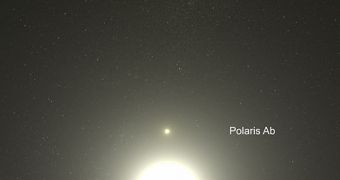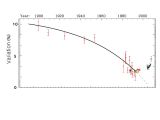Polaris, whose vibrations seem to have almost completely decreased this past century, appears now to have resumed its activity, although astronomers don't quite understand what is triggering the process. Polaris, also known as the Northern Star, is a Cepheid variable star that varies its brightness every four days as a result of the expansion and the contraction of its surface. This is what astronomers like to call 'vibration'.
With the help of a small telescope attached to the former WIRE infrared space telescope operated by NASA, Dr Alan Penny from the School of Physics and Astronomy studied Polaris for a short period of time. Contrary to his belief that the vibrations of the star would switch off completely in the near future, he discovered that in fact they are again increasing. "It was only through an innovative use of two small relatively unknown telescopes in space and a telescope in Arizona that we were able to discover and follow this star's recovery so accurately," said Dr Penny.
Data provided by the SMEI space camera on board WIRE, generally used to observe coronal mass ejections coming from the Sun, and confirmed with the help of the AST automated spectroscopic telescope in Arizona, showed that Polaris was indeed resuming its normal activity. The AST instrument is operated by Professor Joel Eaton of the Tennessee State University, who is doing long-term observations of the star by viewing change in its radial velocity.
Cepheid variable stars do not present any relevance as 'standard candles', which are used to determine distances in the universe, nor is the process responsible for their variable brightness understood.
"One hundred years ago Polaris varied by 10%, but over the last century the variations became smaller and smaller until ten years ago it only varied by 2%. It was thought the structure of the star was changing to switch off the vibration. Yet the team has found that about ten years ago the vibrations started picking up and are now back up at the 4% level," said Dr Penny.
Polaris is the only known Cepheid star known to vary its vibration pattern. The process itself is thought to be linked to changes in the internal structure of the star, which is becoming more unstable as it ages. However, the fact that it has now again resumed activity indicates that the variations may be induced by complex processes in the star's outer layers, and variable stars have more than one mode of vibration.

 14 DAY TRIAL //
14 DAY TRIAL // 
